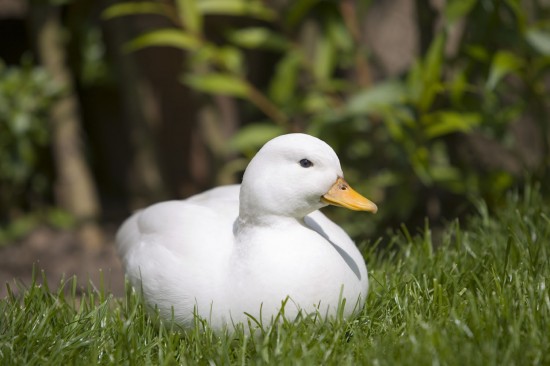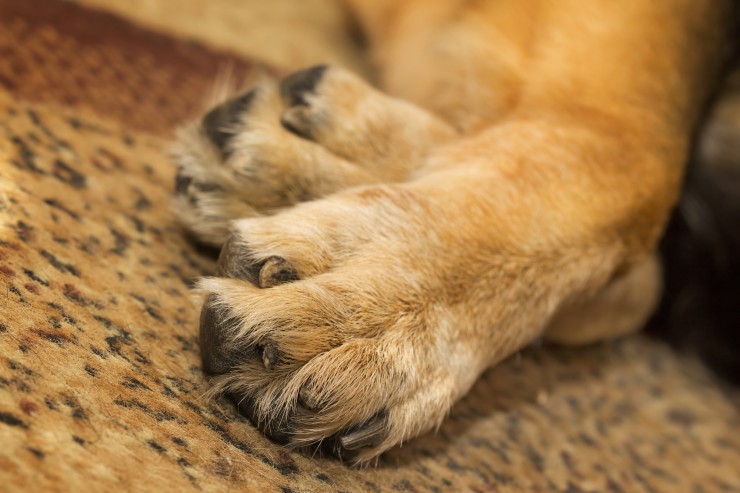
Dogs are the most diverse animal species on earth, with an incredible variety of shapes, sizes, coat types, and coat colors all contained within the genus, Canis lupus familiaris.
So different are they, that you may be tempted to think they are not even closely related, but you'd be wrong. In fact all dogs, from a Great Dane to a teacup Yorkie and everything in between, are virtual anatomical copies of each other.
It is common knowledge that all domestic dogs evolved from wolves, and although selective breeding has changed the appearance of dogs in myriad ways, the basic anatomy of the wolf is still present in modern dogs.
In common with his ancestor the wolf, a dog has;
* A skeletal structure made for running and chasing prey.
* Loose and flexible front legs with disconnected shoulder bones that act as shock absorbers when running.
* Powerful back legs giving them a burst of speed off the mark, and excellent leaping ability.
* Small feet with fused wrist bones which allows them to make rapid changes of direction when running at speed.
* A cardiovascular system that gives them the stamina to stay on the trail of prey for hours if neccesary.
* Tails for signaling, a very important asset for co-operative hunters.
* Powerful jaws with razor-sharp teeth specialized for catching and killing prey.
Other Interesting Facts About Dog Anatomy
Although many of the physical characteristics of modern dogs are due to selective breeding recent research suggests that numerous changes may have occurred naturally.
Despite the many variants in coat colors, all dog coats except black are a variant of yellow. Black coats are down to a mutation of the beta defensin gene.
Dogs keep themselves cool in a number of ways, including panting, sweating through the paw pads, and through an ingeneous "heat exchanger" that keeps body heat away from the brain.
Regardless of size, all dogs have 42 teeth - 6 pairs of incisors towards the front of the mouth, 2 pairs of fangs, or canines, and also premolars and molars for grinding their food.
Dogs have a unique system for keeping their eyes clean, a top and bottom eye lid, plus a third lid that sweeps across the eye like a windshield wiper.
A dog's skeleton has 361 bones, although obviously the shape size and placement between, say a Greyhound and a Bulldog, are quite different.
When a dog is startled or defensive it may raise a ridge of hair along its spine. This raising of the hackles is made possible by tiny muscles that are attached to each hair shaft.
A key element in the success of dogs as a species is their poorly developed sense of taste which allows them to eat things that other animals would run a mile from.
Dogs are one of the most successful species on earth, and much of this is down to their supreme adaptability, and an anatomy that is perfectly suited to their environment.
You'll find more fascinating facts about dogs, and types of dogs, at dogsanddogtraining.com
 3 Gorgeous Domestic Duck Breeds To Keep In A Garden
3 Gorgeous Domest
3 Gorgeous Domestic Duck Breeds To Keep In A Garden
3 Gorgeous Domest
 Things Cats Love To Do Whenever They Can
Things Cats Love
Things Cats Love To Do Whenever They Can
Things Cats Love
 Health Issues Seen In The Biewer Terrier
Health Issues See
Health Issues Seen In The Biewer Terrier
Health Issues See
 Treat Your Dogs Allergies Naturally Part 2
Weve learned already that corn, an ingredient used in mo
Treat Your Dogs Allergies Naturally Part 2
Weve learned already that corn, an ingredient used in mo
 What Is Carpal Hyperextension In Dogs?
What Is Carpal Hy
What Is Carpal Hyperextension In Dogs?
What Is Carpal Hy
Copyright © 2005-2016 Pet Information All Rights Reserved
Contact us: www162date@outlook.com